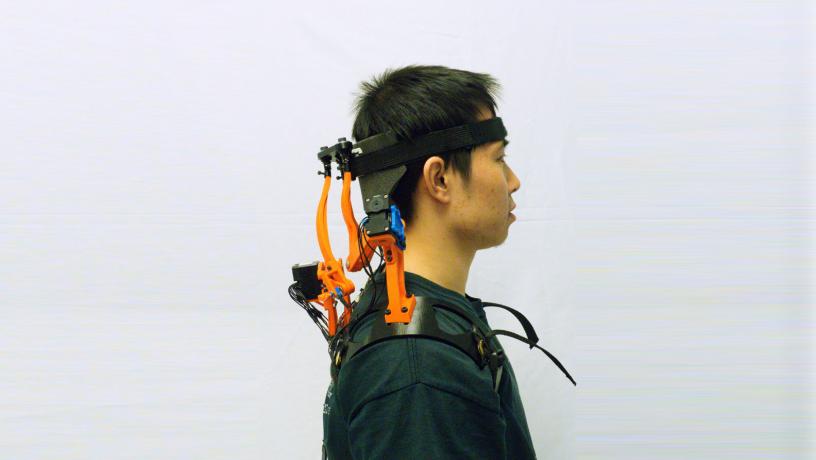A team of engineers and neurologists led by Sunil Agrawal, professor of mechanical engineering and of rehabilitation and regenerative medicine, designed a comfortable and wearable robotic neck brace that incorporates both sensors and actuators to adjust the head posture, restoring roughly 70% of the active range of motion of the human head. Using simultaneous measurement of the motion with sensors on the neck brace and surface electromyography (EMG) of the neck muscles, it also becomes a new diagnostic tool for impaired motion of the head-neck. Their pilot study was published August 7 in the Annals of Clinical and Translational Neurology.
The brace also shows promise for clinical use beyond ALS, according to Agrawal, who directs the Robotics and Rehabilitation (ROAR) Laboratory. “The brace would also be useful to modulate rehabilitation for those who have suffered whiplash neck injuries from car accidents or have from poor neck control because of neurological diseases such as cerebral palsy,” he said.
Demonstration of Robotic Neck Brace for ALS Patients
Commonly known as Lou Gehrig’s disease, ALS is a neurodegenerative disease characterized by progressive loss of muscle functions, leading to paralysis of the limbs and respiratory failure. Dropped head, due to declining neck muscle strength, is a defining feature of the disease. Over the course of their illness, which can range from several months to more than 10 years, patients completely lose mobility of the head, settling in to a chin-on-chest posture that impairs speech, breathing, and swallowing. Current static neck braces become increasingly uncomfortable and ineffective as the disease progresses.
To test this new robotic device, the team recruited 11 ALS patients along with 10 healthy, age-matched subjects. The participants in the study were asked to perform single-plane motions of the head-neck that included flexion-extension, lateral bending, and axial rotation. The experiments showed that patients with ALS, even in the very early stages of the disease, use a different strategy of head-neck coordination compared to age-matched healthy subjects. These features are well correlated with clinical ALS scores routinely used by clinicians. The measurements collected by the device can be used clinically to better assess head drop and the ALS disease progression.
“In the next phase of our research, we will characterize how active assistance from the neck brace will impact ALS subjects with severe head drop to perform activities of daily life,” said Agrawal, who is also a member of Columbia University’s Data Science Institute. “For example, they can use their eyes as a joystick to move the head-neck to look at loved ones or objects around them.”
If our reporting has informed or inspired you, please consider making a donation. Every contribution, no matter the size, empowers us to continue delivering accurate, engaging, and trustworthy science and medical news. Independent journalism requires time, effort, and resources—your support ensures we can keep uncovering the stories that matter most to you.
Join us in making knowledge accessible and impactful. Thank you for standing with us!

